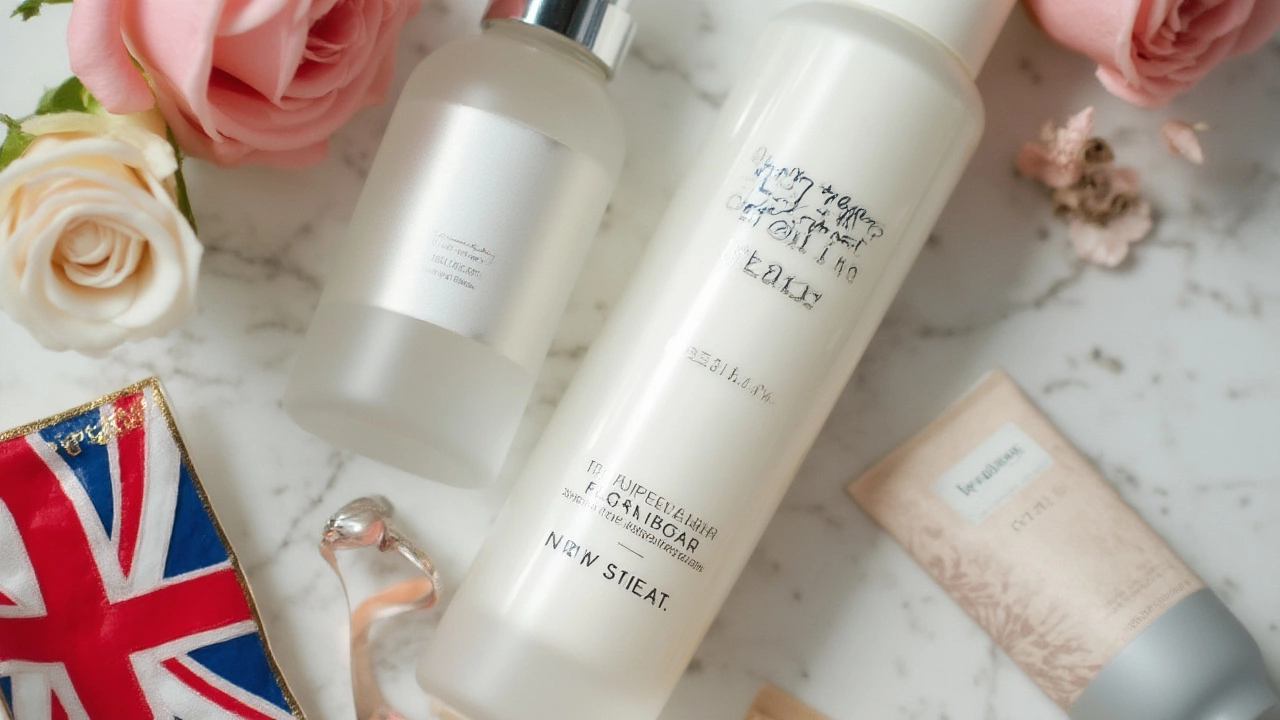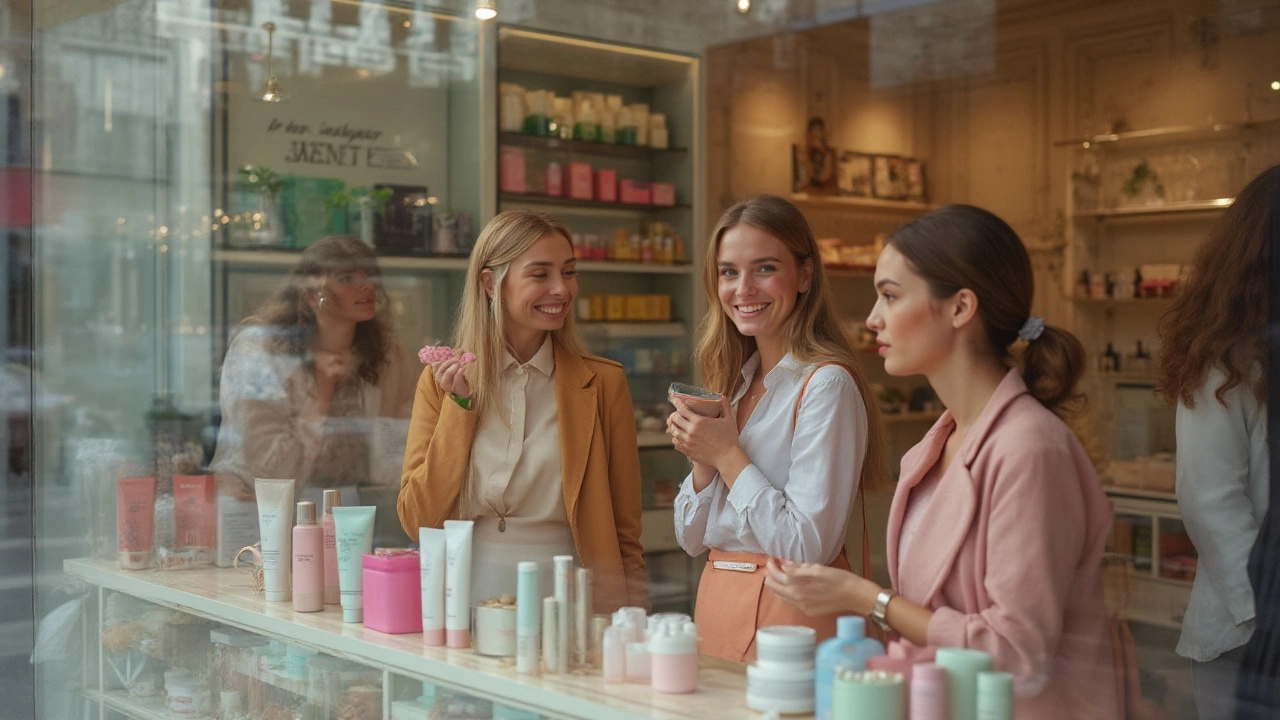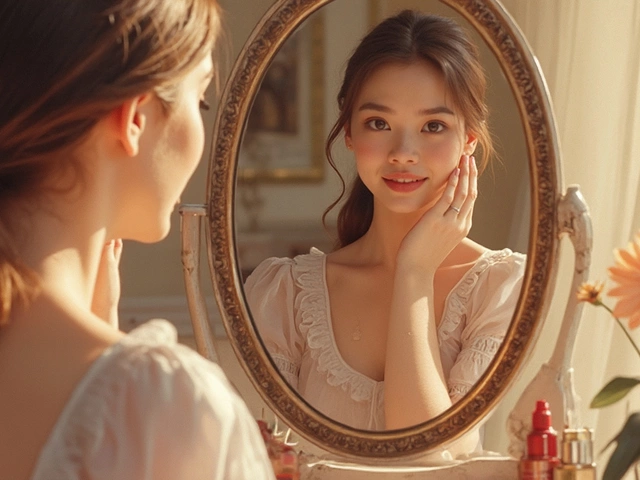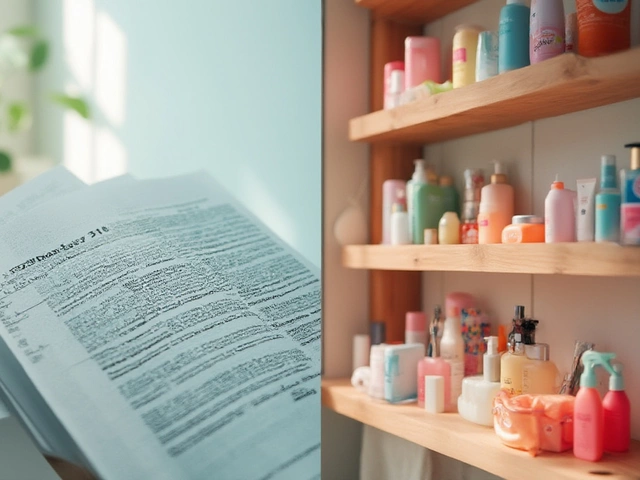Every beauty lover wants to know: what is the number one beauty brand in the world right now? Maybe you’ve walked through the aisles at Sephora or scrolled endless beauty TikToks, spotting those shiny logos and hyped-up products. But what brand really dominates the beauty industry—not just by hype, but by stats, sales, and real-world impact? More interestingly, what makes a single brand stand out in a sea of creams, serums, and palettes?
Behind those glossy magazine ads and influencer reviews, there’s a story. It’s not just about flashy packaging or celebrity endorsements. The title of “#1 beauty brand” actually speaks to decades of research, country-by-country trends, and even backstage tricks from top makeup artists. Today, we’re pulling back the curtain. If you want beauty tips, shopping advice, and insider facts all at once—stick with me. Spoiler: there’s way more to this answer than just picking a popular lipstick.
Defining the #1 Beauty Brand: What Sets the Global Leader Apart?
You’d think the beauty world is ruled by wild trends or viral moments, but the crown for the best-selling, most influential beauty brand actually belongs to L’Oréal. Yep, that iconic French name dominates sales reports year after year—pulling in more revenue than any other. To put things into perspective, L’Oréal saw over $38 billion in sales last year, stretching across almost every continent. That’s more than most luxury fashion houses, and it’s proof that beauty is big business.
L’Oréal isn’t a one-hit wonder; its empire covers skincare, makeup, hair color, fragrance, and sunscreen. It’s everywhere from your local pharmacy to luxury counters in Paris and skin clinics in Seoul. What blew my mind? L’Oréal owns brands you never realized: Maybelline, Lancôme, Giorgio Armani Beauty, Kiehl’s, NYX, Garnier, and Redken are all under its umbrella. So even if you don’t own an actual “L’Oréal Paris” product, you’ve probably used something that traces back to them.
But being number one isn’t just about selling the most bottles of shampoo. The secret sauce lies in L’Oréal’s investment in research. Did you know they employ over 4,000 scientists? Their labs are like beauty Hogwarts, coming up with new molecules and formulas every year. Ever heard of hyaluronic acid creams or micellar water? L’Oréal basically brought those into the mainstream. They were also the first to make UV filtering sunscreen accessible worldwide, not just a luxury for a few.
If you’re wondering what this matters to your bathroom shelf, here’s the thing: L’Oréal’s scale means they can test products in almost every climate and on hundreds of skin tones, so you’re less likely to hit that “this didn’t work for me” moment. Plus, their sustainability push goes way beyond buzzwords—they pledged to become carbon neutral by 2025 and have cut plastic packaging by millions of tons so far. For the beauty world, that’s serious progress.
Let’s talk real-life impact. Makeup artists swear by L’Oréal-owned brands backstage at Fashion Week. YouTubers routinely rate Maybelline mascaras as the best for volume and length. The classic L’Oréal Elnett hairspray? It’s basically a red carpet staple. Even dermatologists point to La Roche-Posay (owned by L’Oréal) as the go-to for gentle, effective skincare for sensitive skin.
The reason L’Oréal keeps that top spot is simple: no other brand blends mass appeal with research, accessibility, and innovation quite like they do. If you want the best odds of finding a product that works for your budget and your skin, it’s pretty hard to beat this powerhouse.
Inside the L’Oréal Universe: Bestsellers and Fan Favorites
Let’s get down to what really matters—what are the products people actually can’t stop buying? In 2025, the L’Oréal stars aren’t just old-school mainstays, but newer launches and TikTok favorites. If you’re building a makeup kit, or tweaking your skincare routine, you’re bound to stumble on these picks. I’ve rounded up some of the beauty brand blockbusters and a few underrated gems you might’ve missed.
- L’Oréal Paris Revitalift Serum: You’ve probably seen the campaigns everywhere, but this hyaluronic acid-packed serum is actually legit. It hydrates like a glass of water for your skin without making you greasy. TikTok loves it for prepping the skin under makeup, and dermatologists often approve.
- Maybelline Lash Sensational Mascara: Beauty editors claim it’s the best for spidery, defined lashes under $15. Seriously, it stands strong even against luxury competitors. A trick? Wiggle it slowly from root to tip to catch every lash.
- La Roche-Posay Anthelios Sunscreen: If you’re serious about SPF, this is the cult-favorite. It’s lightweight, never sticky, and doesn’t clog pores. Hot tip: it won a global beauty award in 2024 for being effective even in humid weather.
- Garnier Micellar Water: This French pharmacy staple removes mascara, sunscreen, and stubborn foundation with hardly any rubbing. Makeup artists keep it in their kits because it’s so gentle on sensitive skin.
- NYX Soft Matte Lip Cream: These give bold color without the crustiness of old-school matte lipsticks, and the “Cannes” and “London” shades sell out all the time. Plus, NYX always drops fun collabs with influencers.
- Lancôme Teint Idole Ultra Wear Foundation: Praised for its shade range (over 50!) and breathable feel. Pro tip: use a damp sponge for a dewy, natural finish.
- Kiehl’s Ultra Facial Cream: If you want lasting moisture, this classic jar is beloved in both freezing New York winters and muggy Singapore monsoons because it adapts to your skin’s needs.
What makes these all such standouts? They’re tested in hot, cold, dry, and humid places, so whatever your skin type or climate, you’ll likely find a match. L’Oréal’s brands are also fast to jump on buzzy ingredients—like niacinamide, retinol, squalane—but always back it up with real clinical tests. Ever get breakouts from random trendy stuff on social media? The difference here is research and decades of learning from what works. If there’s one secret hack: start with L’Oréal’s dermatologist-led offerings if you have sensitive or reactive skin, and play with their fun, color-rich brands when you want to experiment with makeup looks.

Why L’Oréal Remains #1: Science, Sustainability, and Cultural Trends
You might wonder, how does a mega-brand keep beating the competition year after year? Especially when every season brings new viral TikTok brands and celebrity launches? L’Oréal has a few big levers that keep it at the top. First—science isn’t just a buzzword. A good chunk of their profits gets reinvested into R&D, meaning there’s a constant pipeline of new formulas and improvements. In 2024 alone, they filed over 500 patents globally. That’s huge in beauty, where new molecules can launch entire trends: think “retinol for day,” blue-light protection creams, or anti-pollution sprays.
The company also watches cultural trends like a hawk. Back in the early 2010s, K-beauty was taking over the world with cushion compacts, essence waters, and snail creams. Rather than ignore it, L’Oréal snapped up local brands and even integrated Korean research into their global lines. They don’t just follow trends—they often create them, like with the surge in micellar cleansing waters or the shift towards multi-use makeup sticks that save time and space.
Sustainability is another big piece. In 2021, L’Oréal was recognized as a “Global Compact LEAD” company by the United Nations. They’ve rolled out refills, recycled packaging, and formulas that break down harmlessly in the environment. They even banned animal testing worldwide before it was law in many countries, shifting to artificial skin models for safety testing. Even the factories are moving to clean energy; by mid-2025, over 95% of L’Oréal’s global production sites were running on renewables.
And then there’s inclusivity. This isn’t just about broad shade ranges (though that helps). L’Oréal campaigns tap into real people of all backgrounds. Their products are tested on dozens of skin tones, hair types, and age groups. If you’ve ever struggled to find a foundation match or a shampoo that actually works with curly hair, you’ll probably find something in their lines.
The company’s huge reach also means anyone—whether you live in a huge city or a small town—can try the latest beauty innovations, bringing luxury-esque formulas to normal budgets. So if you’re chasing the next It Girl eyeliner, or you just want your skin to not freak out in winter, you’re set.
A neat nugget: L’Oréal also runs the L’Oréal-UNESCO For Women in Science program, which awards female scientists around the world. They tie beauty with brains—encouraging not just looking good, but working towards real-world impact. It's one of the reasons people connect with them far beyond a simple product purchase.
How to Choose Beauty Products Like a Pro: Tips Straight From the Source
So now you know who leads the charts, but how do you make those endless beauty aisles work for you? Learning from the habits of the top beauty brand, here are a few practical pointers every shopper should know:
- Read the Label—But Smarter: Don’t just fall for “hydrating” or “anti-aging” claims. If a L’Oréal brand puts “hyaluronic acid” or “ceramides” front and center, it’s generally a sign of real ingredients backed by legit testing. But always check for allergens or ingredients you know don’t vibe with your skin.
- Test Before You Commit: Many L’Oréal stores or counters will offer testers or mini sizes, so you can try a foundation or moisturizer for a few days before buying the big version. Even better if you can ask for a sample sachet at the pharmacy!
- Don’t Chase Every Trend: Sure, there’s a lot of buzz around things like snail mucin or glass skin. If you’re just starting, stick with proven basics, like gentle cleansers or lightweight serums, before jumping into wild new launches. L’Oréal lines often have beginner kits for this.
- Mix and Match Brands: Since so many top brands are under one roof, you can actually combine—for example, using La Roche-Posay sunscreen, Maybelline mascara, and Kiehl’s moisturizer—knowing they’ve all been through rigorous quality checks.
- Watch for Limited Edition Collabs: NYX and Maybelline especially put out fun, exclusive palettes or lipsticks tied to pop culture moments. These tend to sell out fast, but can be a fun way to try something new (and they make great gifts).
- Upgrade When You’re Ready: L’Oréal’s luxury arms, like Lancôme or Giorgio Armani Beauty, pull in new tech from the main labs but with extra refinement. So if you love a drugstore foundation but want to splurge, check out these lines for a fancier finish.
- Follow Up on Skincare Claims: If a product claims to brighten or firm, look for brands that show clinical results—not just “after one use.” L’Oréal-backed brands sometimes post real before-and-afters, or actual clinical study data online.
- Check Sustainability Credentials: Nearly all their brands now list whether packaging is recycled or recyclable. Some even offer refill pouches and in-store recycling for hard-to-handle items like pump bottles.
Your kit doesn’t need to be all one brand, but leaning into L’Oréal’s bestsellers means less guesswork and fewer “regrets buys.” If you ever feel lost, try starting with the top-rated items (like the Revitalift serum, Anthelios sunscreen, or Lash Sensational mascara) and build out as your confidence grows.
To wrap up this beauty deep-dive? The number one beauty brand is L’Oréal, for good reason. They blend scientific research, trend-setting products, and a push for sustainability into almost every item on your shelf. Their reach, both global and personal, means there’s something for everyone—whether you’re a beauty beginner or a backstage pro. Best part? You can usually find their products at every price level, so glowing up is within reach, even on a “I only have $20” kinda day. Now, time to go test that mascara everyone’s raving about.


